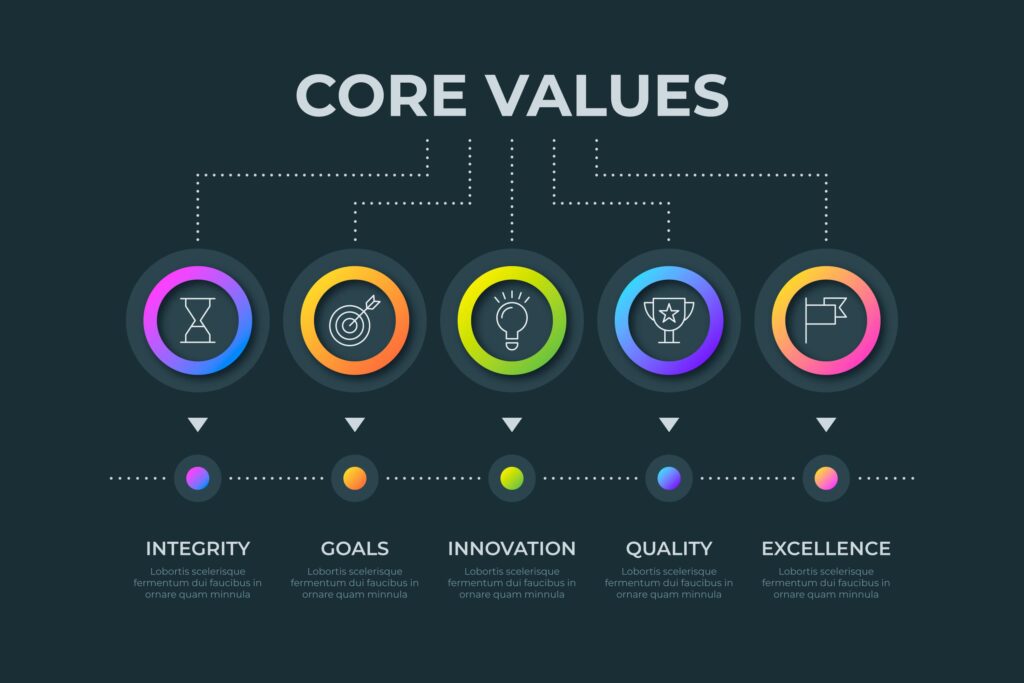Creating a business plan isn’t just a formality—it’s the lifeline of a successful venture.
Whether pitching to investors, applying for a loan, or trying to keep your startup vision on track, a great business plan helps turn ideas into reality.
But while many plans end up being overly complex or vague, the most effective ones often share three essential ingredients:
- a clear value proposition,
- solid financial projections, and
- a defined market strategy.
This article will break down these three key elements, explore why they matter, and show you how to get them right.
We’ll also share expert insights, real-life case studies, and actionable tips to help you build a business plan that attracts funding and builds long-term credibility.
READ THIS : Top 10 Personal Branding Mistakes to Avoid as an Entrepreneur
1. Clear Value Proposition: The Core of Your Business Plan
What Is a Value Proposition?
At its heart, a value proposition answers three fundamental questions:
- What problem are you solving?
- Who are you solving it for?
- What makes your solution better, faster, or cheaper than others?
It’s the foundation of your business model and the lens through which customers and investors will judge your venture. If your value proposition isn’t clear, compelling, or unique, your business will struggle to stand out, no matter how good your product is.

Photo via Freepik
Why It Matters
According to CB Insights, one of the top reasons startups fail is “no market need”—in other words, poor value propositions. A killer business plan doesn’t just describe a business; it convincingly explains why the world needs this business now.
How to Craft a Strong Value Proposition
- Start with the pain point. What frustrates your target audience? Is there a gap in existing services or products? The more urgent the problem, the more compelling your solution.
- Present your solution as the hero. Describe how your product or service solves the problem in a clear, concise, and jargon-free way.
- Highlight the differentiation. If you’re entering a market with existing players, what makes your offering better or different? Is it faster, cheaper, easier, or more user-friendly?
- Test your proposition. Share it with real potential customers or industry insiders and see if they understand it within 30 seconds. If they don’t, refine it.
Example: Airbnb
Airbnb’s original pitch was:
“Book rooms with locals, rather than hotels.“
In one line, they captured the value: cheaper, more authentic, and community-driven travel experiences. It wasn’t about listing features—it was about connecting with a core desire of travelers.
Checklist for Your Value Proposition Section
- Clearly states the target audience
- Identifies a specific, real problem
- Explains how the product/service solves that problem
- Shows why your solution is unique or better
- Easy to understand at a glance
2. Solid Financial Projections: Turning Vision into Viability
Why Financials Are Crucial
While a great idea gets attention, strong financials get commitment. Investors want to know they’ll get a return. Banks want to ensure their loans will be repaid. And you, as the founder, need to know your idea is financially viable.
Good financials are not just guesses—they are data-driven forecasts that show you’ve done your homework.

Image credit: Freepik
Key Components of Business Financials
- Startup Costs: Initial capital needed to get your business off the ground—this includes equipment, licenses, marketing, office space, and initial inventory.
- Revenue Projections: Estimated monthly or quarterly income based on market research, pricing strategy, and customer base.
- Cost of Goods Sold (COGS): Direct costs associated with producing your product or service.
- Operating Expenses: Salaries, rent, utilities, software subscriptions, marketing, and other day-to-day costs.
- Profit and Loss Forecast: A projected income statement showing whether you’ll make a profit or loss over time.
- Break-even Analysis: When your revenue will start covering your expenses.
- Cash Flow Statement: Shows how much cash you expect to flow in and out each month—vital for avoiding bankruptcy due to liquidity issues.
How to Make Your Projections Credible
- Use industry benchmarks. Don’t invent numbers—research what’s typical for your industry using sources like IBISWorld, Statista, or market surveys.
- Build different scenarios. Offer best-case, worst-case, and realistic-case projections. This shows you’re thinking about risks.
- Be conservative. Overestimating revenue or underestimating costs raises red flags. Be honest about how long it will take to be profitable.
- Use visuals. Graphs, pie charts, and tables make financial data easier to digest.
Example: A Small Café
Let’s say you want to open a café. Here’s what a simplified 1st-year forecast might look like:
- Startup Costs: $25,000 (equipment, furniture, rent deposit)
- Monthly Revenue: $12,000 (based on 80 customers/day x $5 average sale)
- Monthly Costs: $9,000 (salaries, rent, utilities, supplies)
- Monthly Profit: $3,000
- Break-even: Month 9
This level of transparency reassures stakeholders and gives you a realistic roadmap.
People Also Read: Bootstrapping Your Business: Advantages, Drawbacks, and What You Must Know Before Going Solo
Mistakes to Avoid
- Relying on unrealistic growth rates
- Leaving out taxes or hidden costs
- Failing to update projections regularly
- Ignoring cash flow management
3. Defined Market Strategy: Mapping the Road to Success
You may have the best product in the world, but without a plan to find, reach, and retain customers, your business won’t last. A solid market strategy answers:
- Who are your customers?
- Where do they spend their time?
- How will you attract them?
- What’s your sales funnel?
- How will you beat your competitors?

Photo by DC Studio via Freepik
Key Elements of a Winning Market Strategy
- Target Market Definition
Be specific. Don’t just say “millennials”—describe their age range, location, interests, buying habits, and pain points.
Example:
“Our target market is women aged 25–40 in urban areas, who prioritize sustainability and spend at least $100/month on beauty products.”
- Market Size and Opportunity
Use data to show that your market is large enough to sustain your business and has room to grow.
- Total Addressable Market (TAM)
- Serviceable Available Market (SAM)
- Serviceable Obtainable Market (SOM)
- Competitive Analysis
Identify your top 3–5 competitors. Compare their strengths, weaknesses, and how your product will stand out.
- SWOT (Strengths, Weaknesses, Opportunities, Threats) analysis helps here.
- Customer Acquisition Strategy
How will you attract customers? This includes:
- Digital Marketing (SEO, social media, email)
- Traditional Marketing (flyers, billboards, events)
- Partnerships
- PR/Media Coverage
- Sales Strategy
Will you sell directly online, through retailers, via a subscription model, or with a sales team? Explain your pricing model and how you’ll handle distribution.
- Retention and Loyalty
It costs more to get a new customer than to keep one. How will you build loyalty?
- Rewards programs
- Excellent customer service
- Frequent communication
Example: Subscription Box for Pet Supplies
Target Market: Pet owners aged 30–50, middle-income, primarily in the U.S., who value convenience and pet health.
Marketing Channels:
- Instagram/TikTok pet influencers
- Google Ads targeting “healthy dog snacks”
- Email campaigns with first-box discounts
- Blog content about pet nutrition
Sales Model: Monthly subscription with optional add-ons and tiered plans.
Retention Plan: Loyalty points, birthday treats for pets, and a referral program.
Common Market Strategy Pitfalls
- Targeting “everyone” instead of a niche
- Ignoring online and digital strategy
- Underestimating customer acquisition costs (CAC)
- Overlooking customer experience and after-sales support
Putting It All Together: The Business Plan Blueprint
While these three ingredients—value proposition, financial projections, and market strategy—form the core, a full business plan usually includes additional sections such as:
- Executive Summary: Snapshot of your entire plan (often written last, read first).
- Company Description: Background, mission, legal structure, and goals.
- Team and Management: Who’s behind the business and their qualifications.
- Product or Service Description: Technical specs, benefits, lifecycle.
- Appendix: Supporting documents like licenses, product images, customer testimonials, and full spreadsheets.
Why Many Business Plans Fail (and How to Avoid It)
- Too vague: Avoid generalizations like “We plan to scale quickly” without saying how.
- Overly optimistic: Don’t promise unicorn growth in year one unless you’re a true outlier.
- Lack of focus: A plan trying to do too many things often does none well.
- Ignoring competition: Saying “no competition” is usually false and naive.
Pro Tips:
- Keep your language clear and professional
- Use bullet points, headers, and visuals for readability
- Review and revise regularly—your business plan should evolve with your business
- Tailor your plan for different audiences (investors vs. banks vs. team)
A killer business plan doesn’t need to be 50 pages long—it needs to be focused, convincing, and data-backed.
Whether you’re an aspiring entrepreneur or looking to pivot your current business, mastering these three ingredients—a clear value proposition, solid financial projections, and a defined market strategy—will set you apart.
Remember: investors don’t invest in ideas—they invest in people with plans.



2 Comments
Pingback: 10 ways to Validate a Business Idea Before Spending a Dime - Magic Media
Pingback: How to Create a Small Business Budget That Fuels Growth and Prevents Financial Surprises in 2025 - Magic Media